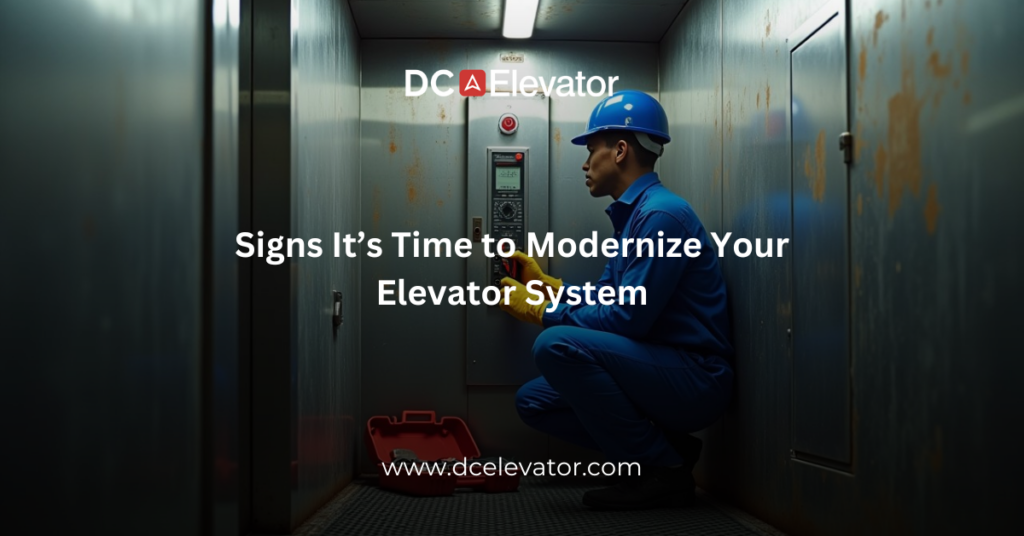Have you ever been in an elevator that felt outdated or unreliable? Aging elevator systems frustrate building occupants and can lead to costly repairs. For property owners and facility managers, maintaining a safe and efficient elevator is essential. In this blog, we’ll explore key signs that indicate your elevator system needs an upgrade and how modernization can enhance safety, performance, and efficiency.
1. Frequent Breakdowns and Repairs
If your elevator experiences frequent service interruptions or requires constant maintenance, it’s a clear sign that the system is aging. Frequent breakdowns not only frustrate tenants but also lead to increased maintenance costs. Investing in modernization can reduce downtime and improve reliability.
2. Slow Performance and Inconsistent Ride Quality
Does your elevator take longer than usual to arrive? Do passengers experience sudden jolts or uneven leveling? Slow response times and inconsistent ride quality indicate worn-out components that need upgrading. Modernization can improve speed, precision, and overall ride comfort.
3. Difficulty Finding Replacement Parts
Older elevator systems often use outdated components that manufacturers no longer produce. If sourcing replacement parts has become a challenge, it’s a strong indication that modernization is necessary. Upgrading to newer technology ensures long-term serviceability and efficiency.
4. Non-Compliance with Safety and Accessibility Standards
Regulatory codes evolve over time, and older elevators may no longer meet current safety or accessibility standards. If your system lacks essential features such as emergency communication devices, automatic door reopening sensors, or ADA-compliant controls, modernization can help bring your elevator up to code.
5. Increasing Energy Costs
Older elevators consume more energy due to inefficient motors, outdated lighting, and outdated control systems. Modernizing your elevator with energy-efficient components, such as regenerative drives and LED lighting, can significantly reduce energy consumption and lower operating costs.
6. Outdated Aesthetics and Controls
An elevator’s appearance and user interface play a crucial role in the overall impression of your building. If your system looks outdated or lacks modern features such as digital floor indicators and touchless controls, an aesthetic and functional upgrade can enhance the user experience and align with contemporary building standards.
7. Increased Tenant Complaints
If tenants and visitors frequently complain about slow, unreliable, or uncomfortable elevator rides, it’s time to consider an upgrade. An efficient and modern elevator system contributes to tenant retention and a positive building reputation.
Ignoring signs of an aging elevator system can lead to increased maintenance costs, safety risks, and tenant dissatisfaction. If you’ve noticed frequent breakdowns, slow performance, outdated aesthetics, or rising energy costs, it may be time to consider elevator modernization.
Our team of experts can assess your elevator’s condition and recommend the best modernization solutions tailored to your building’s needs. Contact us today for a professional elevator analysis and take the first step toward a safer, more efficient system.
